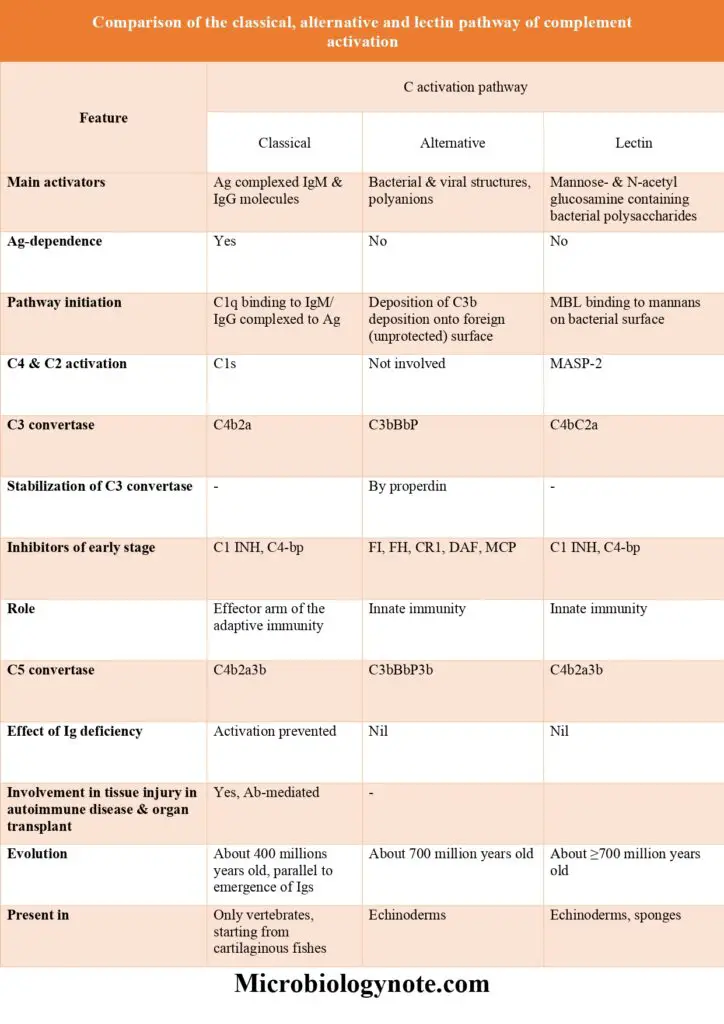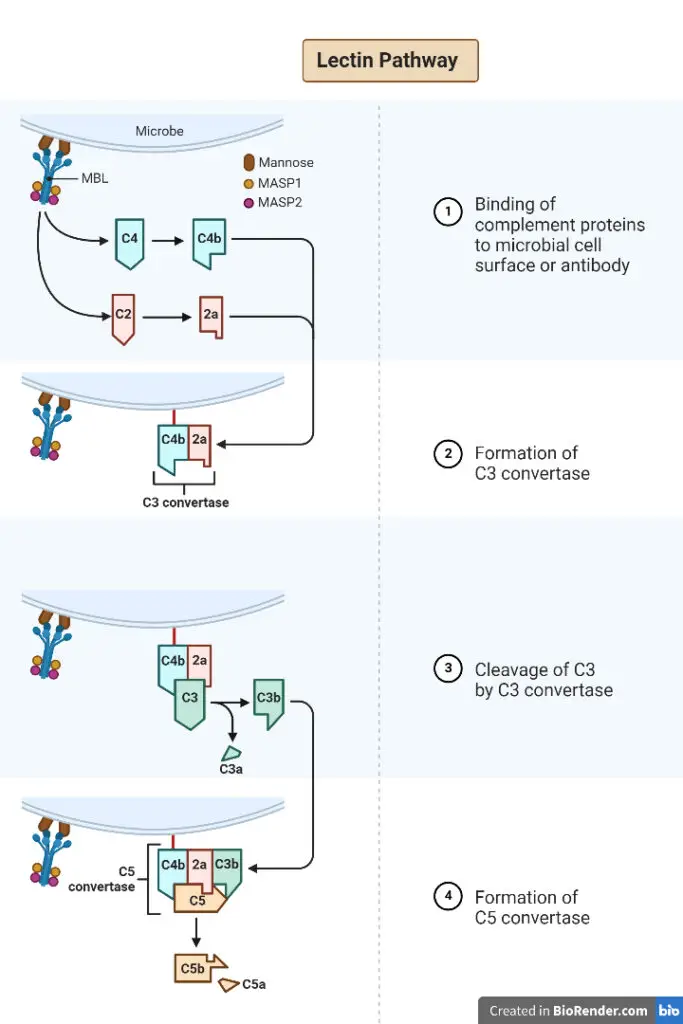Table of Contents
- The complement pathway or cascade is a component of the immune system that boosts the ability of phagocytic cells and antibodies to eliminate pathogens and damaged cells from an organism, stimulate inflammation, and assault the pathogen’s cell membrane.
- Both the innate and adaptive immune systems generate complement pathways.
- This system is comprised of tiny, inactive proteins that are generated by the liver and circulate in the blood.
- In the complement pathways, these proteins or their precursors are activated.
- There are three different complement pathways: classical, alternative, and lectin.
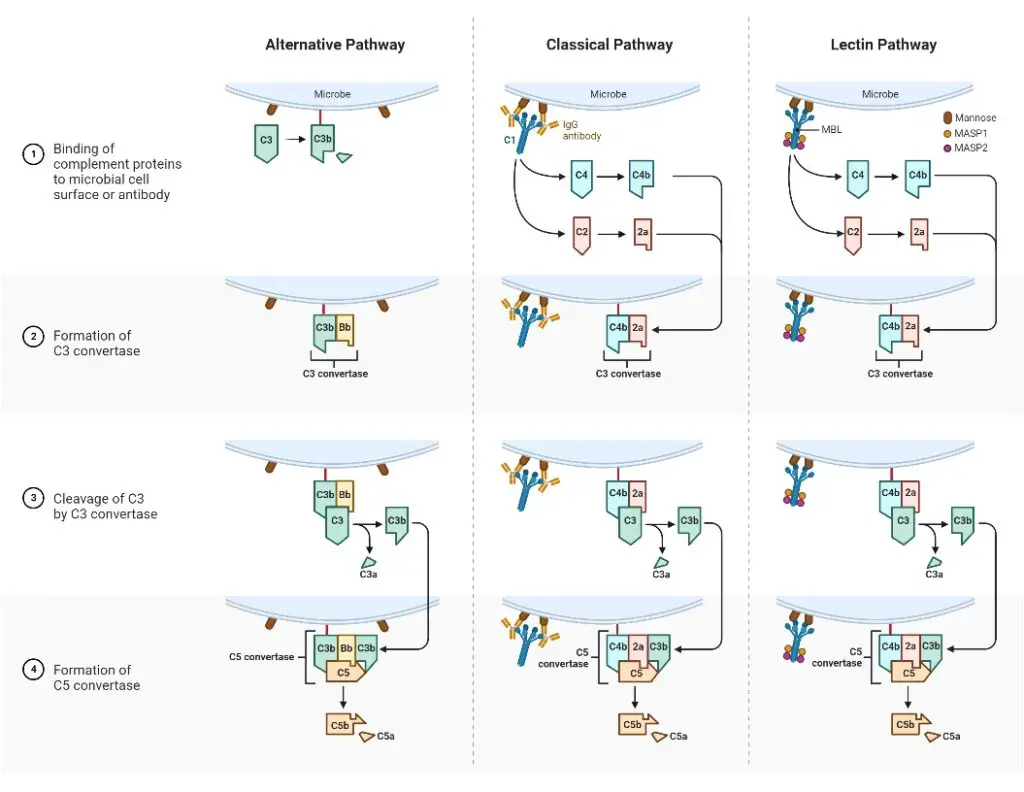
What is a Classical Pathway?
- One of the three mechanisms that activate the complement system is the classical pathway.
- The immune system includes the complement system. The complement system is initiated by antigen-antibody complexes coupled with antibody isotypes IgG and IgM. Additionally, necrotic cells, apoptotic cells, and acute-phase proteins activate the classical route.
- This pathway is triggered by the binding of antigen-antibody complexes to the C1q protein; the globular portion of C1q binds to the Fc region of IgG and IgM antibodies.
- They also bind to the surface proteins of bacteria and viruses, apoptotic cells, and acute-phase proteins.
- C1q becomes part of the inactive C1 complex, which consists of six molecules of C1q, two molecules of C1r, and two molecules of C1s, in the absence of activation factors.
- C1q binding induces conformational changes and the activation of the serine protease C1r. This activates and cleaves the C1s serine protease. The C1s then cleave C4 into C4a and C4b, as well as C2 into C2a and C2b. C4b contributes to the synthesis of C4bC2a, the C3 convertase.
- The ability of the C3 convertase to cleave c3 into C3a and C3b is essential for the subsequent enzymatic process.
- C3v binds to C3 convertase in order to produce C5 convertase, C4b2a3b, whereas C3a recruits inflammatory cells. C5 convertase splits C5 into C5 a and C5b, which are known as anaphylatoxins. C5b joins with terminal components to create the membrane attack complex (MAC). This results in the lysis of invading bacteria through the introduction of functional holes into target cell membranes.
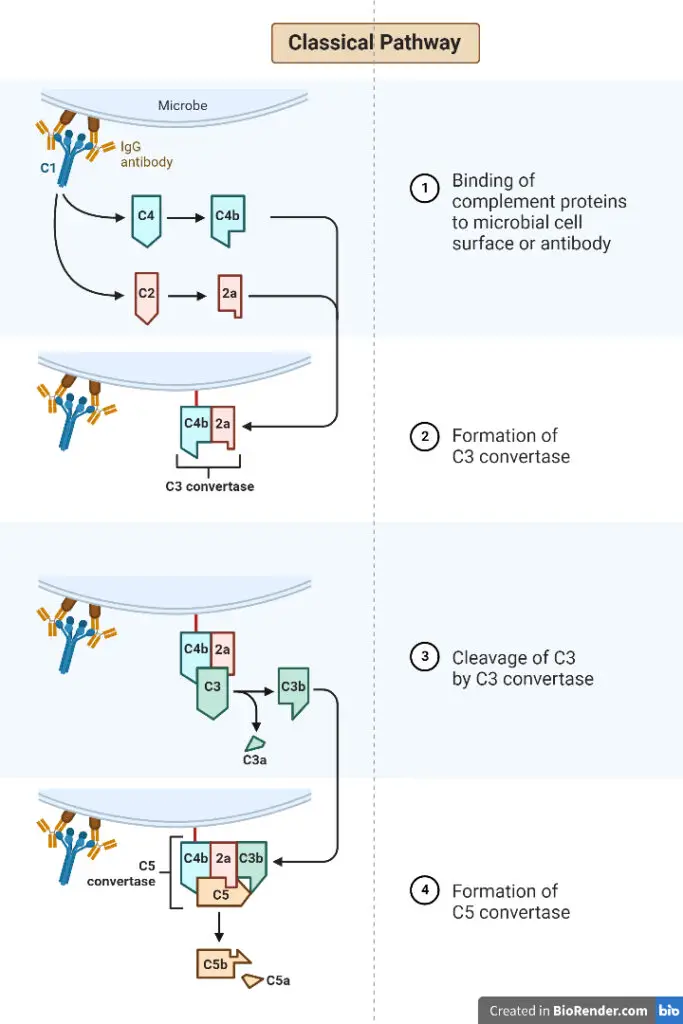
What is an Alternative Pathway?
- One of the three methods in which the body opsonizes and kills invaders is the alternate pathway.
- The alternative pathway is triggered by exposure to pathogens such viruses, fungi, bacteria, parasites, immunoglobulin A, and polysaccharides, and it functions as a crucial immune-independent defensive mechanism.
- Direct binding of the C3b protein to a bacterium sets off this cascade. This alternate pathway is also activated by foreign contaminants and damaged tissues.
- C3b can bind to the surface of either a host cell or a pathogen because it is present in large quantities in the blood plasma. Multiple regulatory proteins work together to keep the host cell from being activated by the complement system.
- Factor B is displaced from the C3bBb complex due to competition from Complement Receptor 1 (CR1) and Decay Accelerating Factor (DAF).
- A plasma protease known as complement factor 1 cleaves C3b into an inactive form, iC3b, which prevents C3 convertase from being formed.
- A C3b-binding protein cofactor, such as Factor H, Cr1, or a membrane cofactor of proteolysis, is necessary for the activity of Complement Factor 1.
- Since Factor H competes with Factor B for binding with C3b, its presence prevents the production of C3 convertase. The C3 convertase’s degeneration is hastened as well by this.
- The complement factor H related protein 5, or CFHR5, binds to C3b on host cells and acts as a cofactor for factor 1, speeding up the declining activity of factor 1.
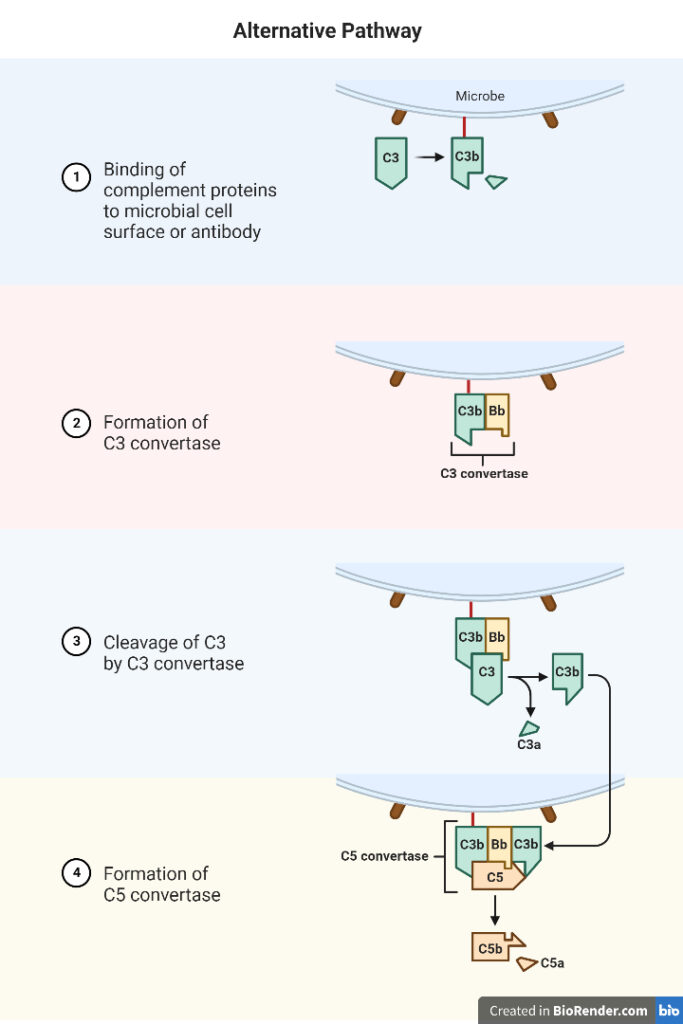
What is a Lectin Pathway?
- The lectin route is a complement cascade response. When this route is set in motion, C4 and C2 take over, resulting in activated complement proteins.
- Beginning with the binding of mannose-binding lectin (MBL) or ficolin to particular sugars, this process is not activated in the presence of an antibody already attached to its target.
- In the carbohydrate or glycoprotein components of bacteria, fungi, and some viruses, this MBL binds to sugars like mannose and glucose containing terminal OH groups.
- Mannose-binding protein (MBL) can bind to pathogen surfaces and trigger the complement system.
- Protein zymogens (mannose-binding lectin associated serine protease; MASP1, MASP2, and MASP3) form complexes with multimers of MBL.
- In several other aspects, they resemble C1r and C1s. To break down C4 and C2 into its constituent subunits, MASP1 and MASP2 become active. C4b has a propensity for adhering to the membranes of bacteria.
- It joins with C2a to generate traditional C3 convertase, which competes with alternative C3 convertase if it is not activated.
- Cytokines C4a and C2b have powerful effects. Mast cells and basophils degranulate in response to C4a, while vascular permeability is increased by C2b.
Similarities Between Classical Alternative and Lectin Pathway
- A chain of events that culminates in the membrane assault complex triggers the classical, alternative, and lectin pathways.
- They function in the body’s defence mechanism.
- Particular proteins are required for the start of each process.
- Certain isotypes of antibodies that bind to antigens trigger them.
The complement components in different activation pathways
| Activation pathway | The C component designations | The activated C component designation | C regulators | The triggering/ initiator C component |
| Classical | C1q, C1r, C1s, C2, C3, C4, C5, (C6, C7, C8, C9) | C1r, C1s, C2a, C3b, C4b, C5b | C1INH, C4 bp, FI, CR1, DAF, MCP (CD46) | C1q |
| Alternative | C3 H2O, FB, FD, P, C5, (C6, C7, C8, C9) | C3b, Bb | FI, FH, CR1, DAF, MCP(CD46) | C3H2O |
| Lectin | MBL, Ficolins, MASP-1, MASP2, C4, C2, C5, (C6, C7, C8, C9) | MASP-1, MASP-2, C4b, C2a, C5b | C1INH, C4-bp, FI, FH, CR1, DAF, MCP (CD46) | MBL/ ficolins |
| The common terminal ‘lytic’ | C5b, C6, C7, C8, C9 | C5b | S protein (vitronectin), clusterin, protectin (CD59), HRF | C5b |
Abbreviations: C1INH: C1 inhibitor; C4-bp: C4-binding protein; MBL: Mannose/ mannan binding lectin;
MASP: MBL-associated serine protease; DAF: Decay accelerating factor; MCP: Membrane cofactor protein;
HRF: Homologous restriction factor; CR1: Complement receptor 1
Activators of the three different complement activation pathways
| Classical | Alternative | Lectin |
| •Immune complexes of IgM and IgG classes • pentraxins • nucleic acids • mitochondria • LPS lipid A • bacterial capsular polysaccharide • C-reactive protein bound to pneumococcal C-type polysaccharide • other microbial components • apoptotic cells • serum β-amyloid protein | •Bacteria • yeast & fungi • some viruses • parasites • some tumor cells • heterologous erythrocytes • LPS • teichoic acid • zymosan • cobra venom factor • anionic polymers • agarose • immune complexes of human IgG, IgA and IgE | •Mannose- and Nacetyl glucosamine -containing polysaccharides on yeast, bacteria, and viruses • glycosylation variants of IgG |
Difference Between Classical, Alternative and Lectin Pathway
| Classical pathway | Alternative pathway | Lectin pathway |
| Chain of events in which components react in specific sequence following activation of C1 | Activation of C3 without prior participation of C1,4,2 | Activated by binding of mannose-binding lectin to mannose residues on surface of microorganisms |
| Requires binding of C1 to antigen–antibody complex | Activators are bacterial endotoxins, IgA and IgD, cobra venom factor, and nephritic factor | No role for antibodies; similar to alternate pathway |
| Cannot be considered as a component of innate immune mechanism | It is a component of the innate immune mechanism | Can be considered as a component of innate immune mechanism |
